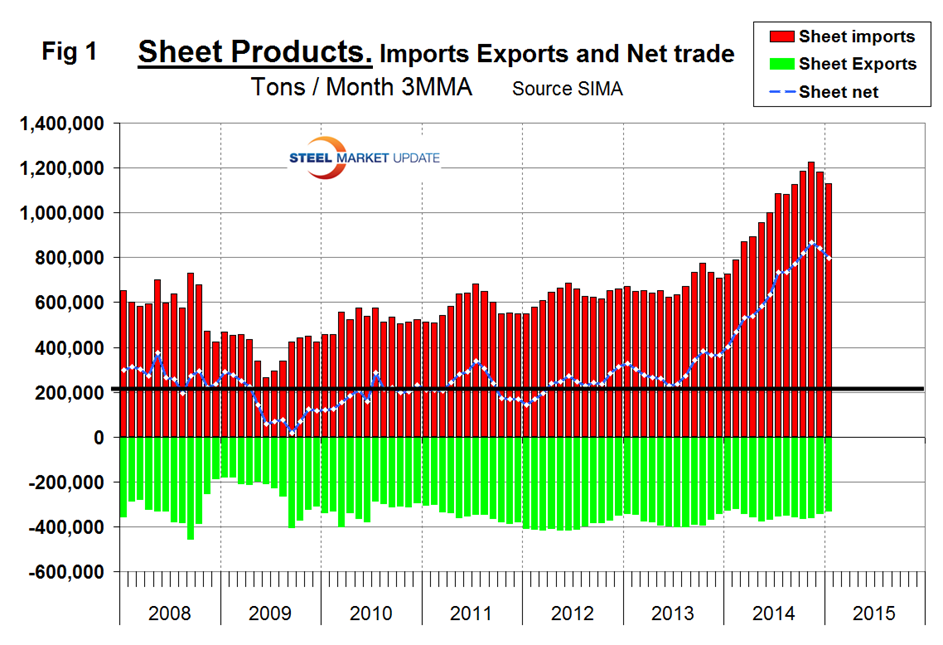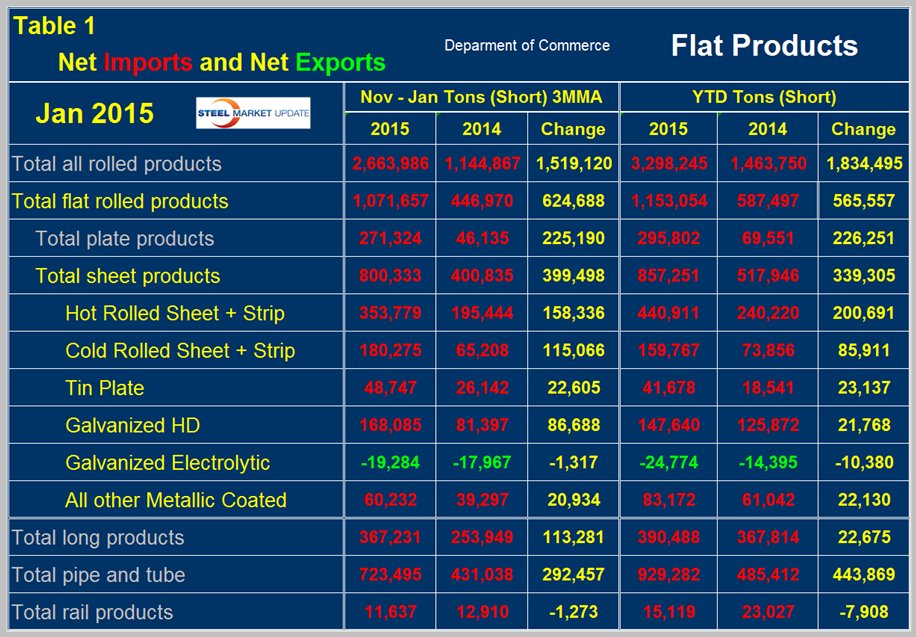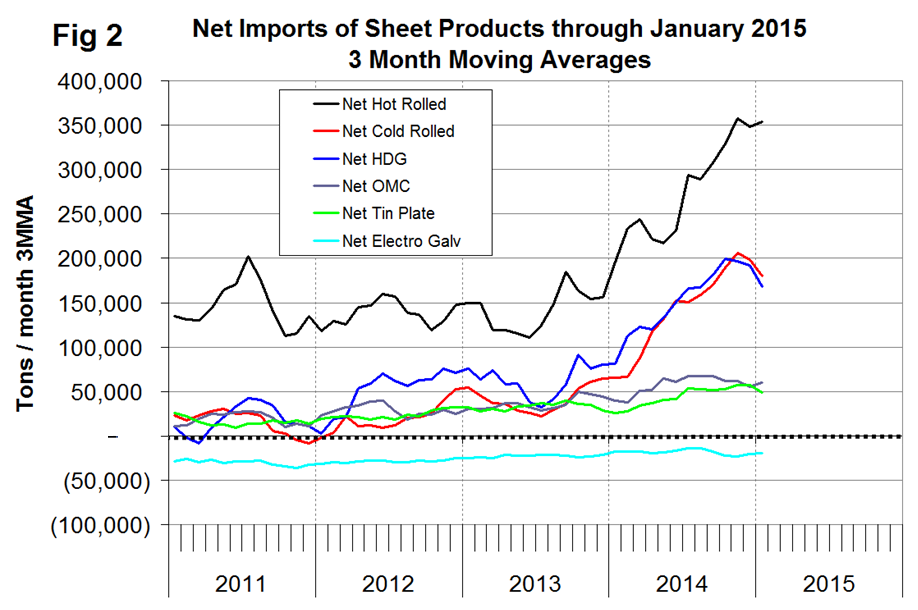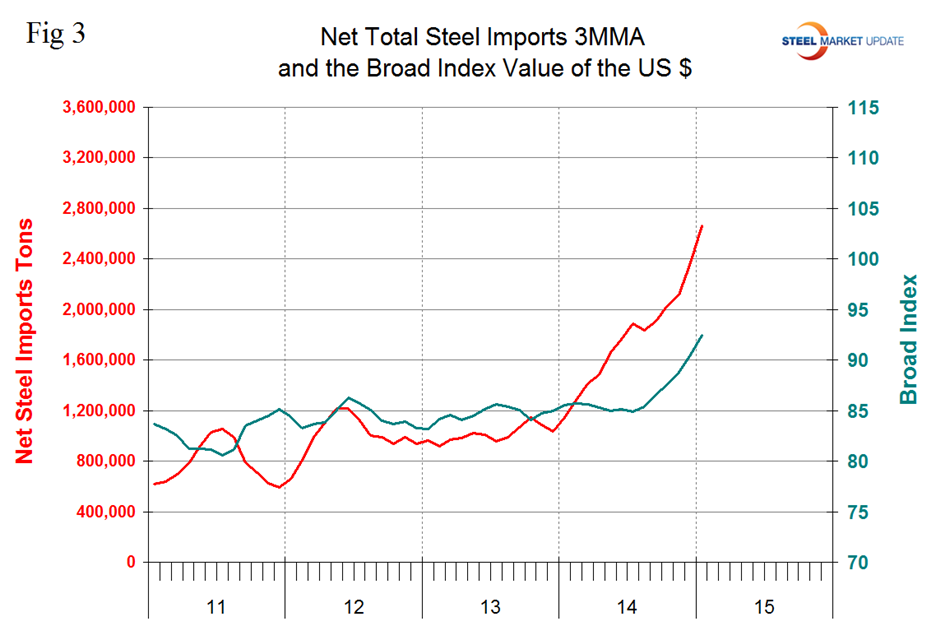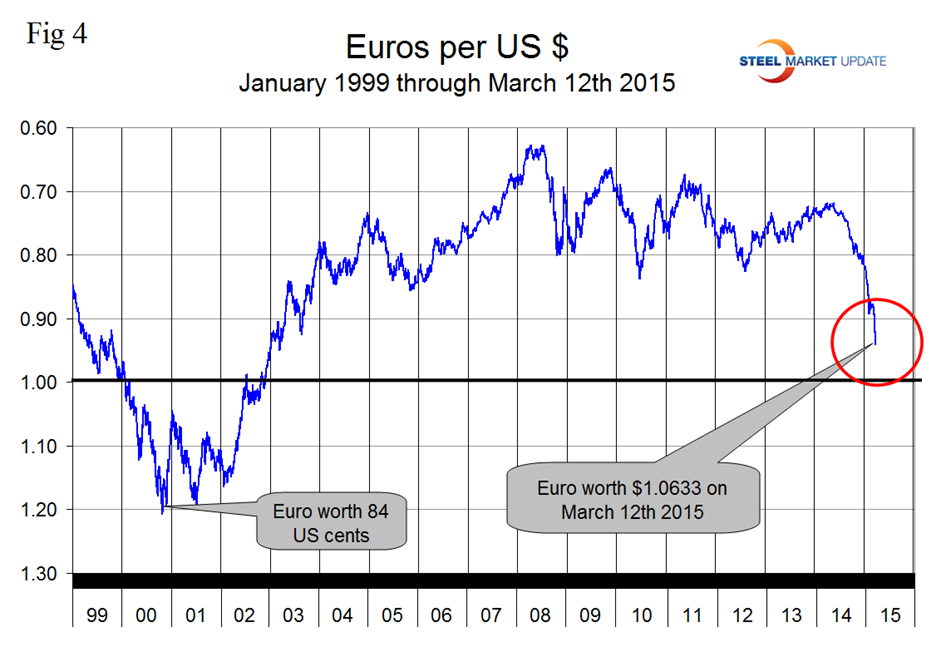Steel Products Prices North America

Net Imports of Sheet Products through January 2015
Written by Peter Wright
March 12, 2015
Net imports equals imports minus exports. We regard this as an important look at the overall trade picture and its effect on demand at the mill level. Figure 1 shows that net sheet product imports on a three month moving average (3MMA) basis in January were almost double that which existed before the recession.
The deterioration in net was almost entirely an import effect, exports have been fairly consistent though drifting down slightly since Q2 2012. Table 1 shows net imports by product.
Year to date through January (one month only), total net flat rolled imports were 1,153,054 tons, of which 857,251 tons were sheet products. On a three month moving average basis, (3MMA), November through January net sheet imports increased by 399,498 tons year over year. The 3MMA of net imports increased on all products except electro-galvanized and rail which were down slightly. Electro-galvanized was the only product to have a trade surplus in 2013 and 2014 and this continued into 2015. In Table 1 negative net imports, (which means a trade surplus) are shown in green. Figure 2 shows the trend of monthly net sheet product imports since January 2011 on a 3MMA basis. Cold rolled and HDG have both decreased in the last two months but hot band after declining in December picked back up in January. The trade surplus of electro-galvanized has been steadily increasing for over three years.
We believe there are two main drivers of the increase in net steel imports. The trade weighted value of the US $ is strengthening which makes our exports less attractive to foreign buyers and makes the US domestic market more attractive to foreign sellers. Figure 3 shows the relationship between net imports and the value of the $ since January 2011.
The strengthening of the dollar is not expected to slow in the immediate future and in fact will probably accelerate as more nations ease monetary policy and the Fed raises interest rates later in 2015. Of particular concern is the decline of the Euro vs the US $ (Figure 4).
The accelerating decline is a result of the ECB’s quantitative easing program of bond purchases that began on Monday. Parity in the very near future now looks like a probability. The second reason is that steel demand in the US is strong at the same time as global demand growth has flattened. The global economy was recently described by Larry Somers as flying on one engine, that being the US. This is exactly what happened in the late 1990s after the Far Eastern currency crash which was followed by a decline in the Euro to below parity with the US dollar. In the period November 2014 through January 2015, the growth of global steel production was only 0.2 percent year over year. As global steel capacity has increased, capacity utilization has decreased and now stands at 72.9 percent. Declining steel demand abroad, strong demand in the US and a skyrocketing US dollar is not a pretty picture for the US steel industry for at least the balance of 2015.

Peter Wright
Read more from Peter WrightLatest in Steel Products Prices North America

Thin demand keeps plate prices hovering at lowest levels since February
Participants in the domestic plate market say spot prices appear to have hit the floor, and they continue to linger there. They say demand for steel remains thin, with plate products no exception.

SMU Price Ranges: HR crawls back to $800/ton
SMU’s HR price stands at $800/st on average, up $5/st from last week. The modest gain came as the low end of our range firmed, and despite the high end of our range declining slightly.

SMU successfully completes IOSCO review
SMU has successfully completed an external review of all our prices. The review has concluded that they algin with principles set by the International Organization of Securities Commissions (IOSCO).

Domestic plate prices could heat up despite so-so demand, market sources say
Some sources also speculated that plate could see further price increases thanks to modest but steady demand, lower imports, mill maintenance outages, and end markets less immediately affected by tariff-related disruptions.

SMU Price Ranges: HR holds, galv slips amid competing market narratives
SMU’s sheet and plate prices see-sawed this week as hot-rolled (HR) coil prices held their ground while prices for galvanized product slipped.

